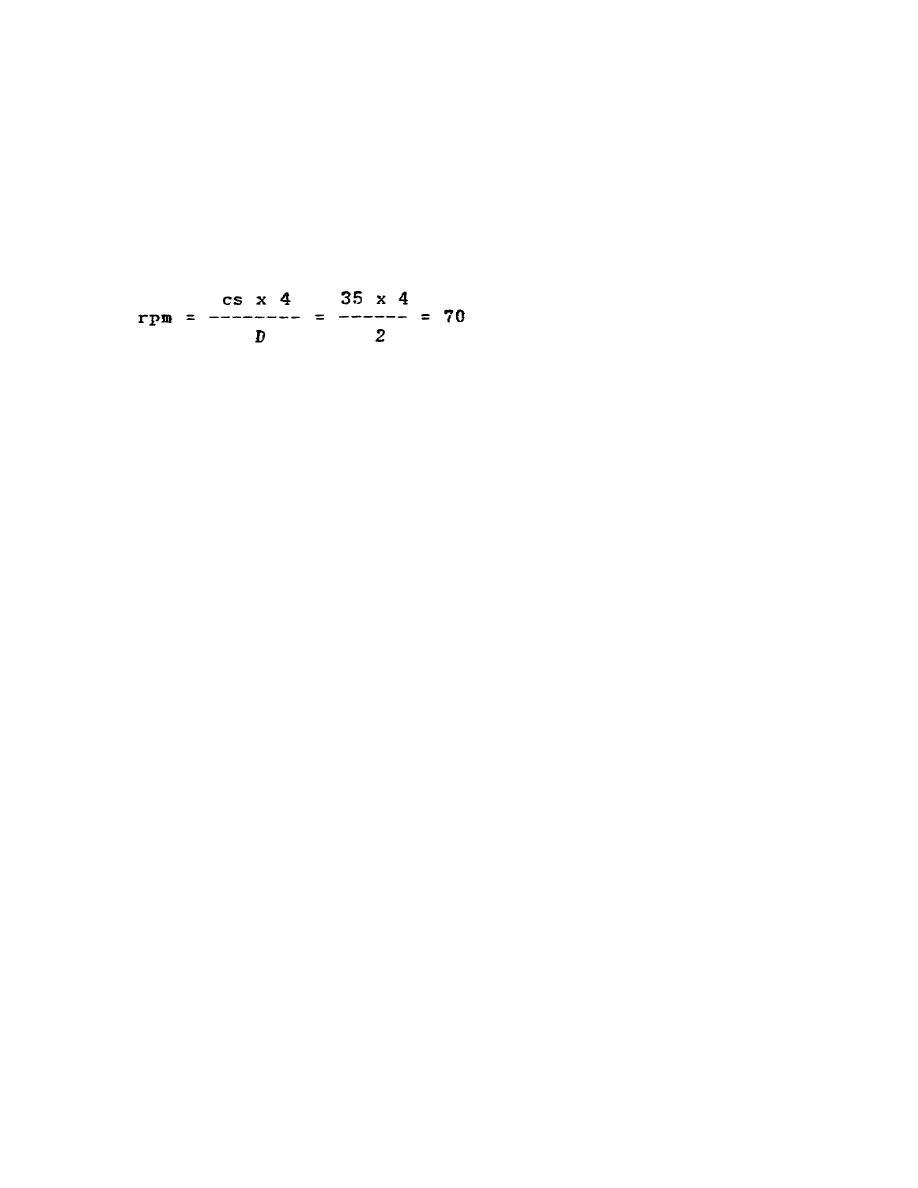
MILLING MACHINE OPERATIONS - OD1644 - LESSON 1/TASK 1
cs
=
cutting speed of milling cutter
(in surface feet per minute)
D
=
diameter of milling cutter (in inches).
For example, the spindle speed for machining a piece of steel at a speed of
35 rpm with a cutter 2 inches in diameter is calculated as follows:
Therefore, the milling machine spindle would be set for as near 70 rpm as
possible.
If the calculated rpm cannot be obtained, the next lower
selection should be made.
(b)
Table 2 on page 32 is provide to facilitate spindle speed
computations for standard cutting speeds and standard milling cutters.
d.
Feeds For Milling.
(1)
General.
The rate of feed, or the speed at which the workpiece
passes the cutter, determines the time required for cutting a job.
In
selecting the feed, there are several factors which should be considered.
These factors are:
(a)
Forces are exerted against the workpiece, the cutter, and their
holding devices during the cutting process.
The force exerted varies
directly with the amount of metal removed and can be regulated by the feed
and the depth of cut.
Therefore, the correct amount of feed and depth of cut are interrelated, and
in turn are dependent upon the rigidity and power of the machine. Milling
machines are limited by the power that they can develop to turn the cutter
and the amount of vibration they can resist when using coarse feeds and deep
cuts.
(b)
The feed and depth of cut also depend upon the type of milling
cutter being used.
For example, deep cuts or coarse feeds should not be
attempted when using a small diameter end milling cutter, as such an attempt
would spring or break the
31



 Previous Page
Previous Page
